News from Maison de la Gare
Talibé Children Discover Their History
Tweeter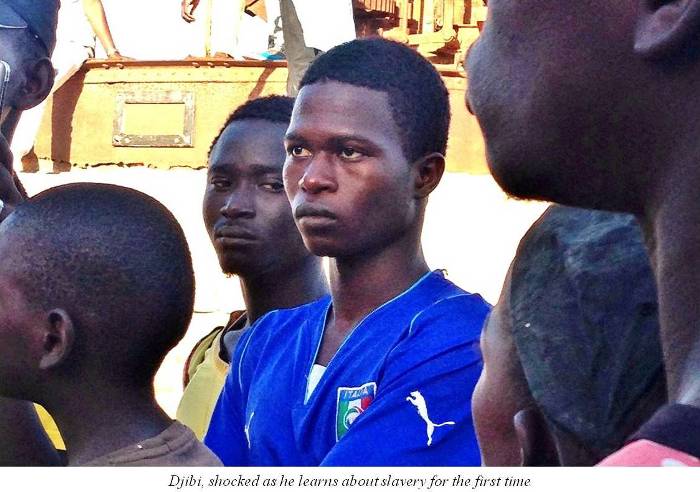
Sonia LeRoy reports on a horse-drawn carriage ride around Saint Louis that became a window on the past
Maison de la Gare is a place where
talibé children have the opportunity to learn, as well as to
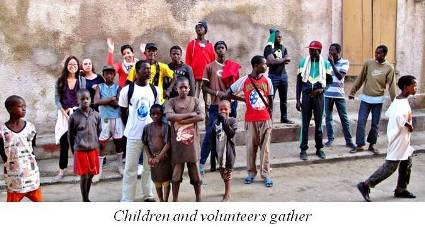 just enjoy being children
while being appreciated as the unique individuals they are. This recently manifested
itself in a unique way for the begging street children of Saint Louis.
just enjoy being children
while being appreciated as the unique individuals they are. This recently manifested
itself in a unique way for the begging street children of Saint Louis.
A group of Canadian high school students, each with a parent (myself one of them)
organized a unique excursion for the talibés of Maison de la Gare. The excursion was
at once an outing to relax far from their daily trials of forced begging, while at the
same time being an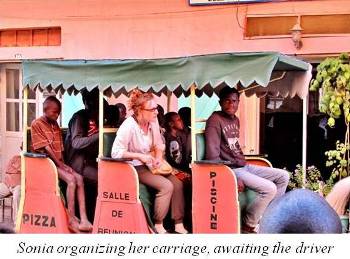 opportunity to bond with the volunteers and to spend time
experiencing a tour and seeing local historical sights. And, these talibés learned
about the history and heritage of the city in which they live, in many cases for the
first time.
opportunity to bond with the volunteers and to spend time
experiencing a tour and seeing local historical sights. And, these talibés learned
about the history and heritage of the city in which they live, in many cases for the
first time.
Initially it was planned that sixteen talibé children, their Maison de la Gare teacher
Bouri Mbodj and the volunteers would participate. When our group met at Maison de la
Gare's center to gather for the walk to the tour departure point on the island of Saint
Louis, the group of interested talibés had become 26. A few more Maison de la Gare
talibés joined the group as we walked and, by the time we prepared to board the horse
drawn carriages to begin the tour, our group had swelled to 35.
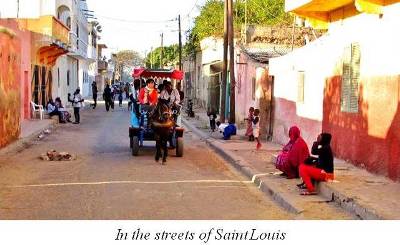 As the tour progressed,
two more stragglers hopped on. Only four carriages had been ordered for 23 people.
However, all 35 squeezed happily into the carts, with the little ones balancing on the
laps of adults and teenagers. Only the hard working horses were unhappy with the situation.
As the tour progressed,
two more stragglers hopped on. Only four carriages had been ordered for 23 people.
However, all 35 squeezed happily into the carts, with the little ones balancing on the
laps of adults and teenagers. Only the hard working horses were unhappy with the situation.
As we set out on our journey, behaving like tourists, bystanders gaped in astonishment
as they realized it was mainly talibés on board, some barefoot
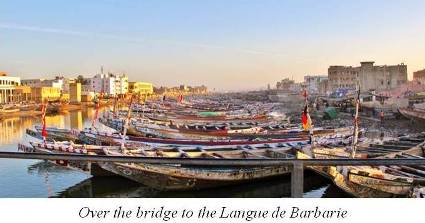 and filthy, but with
beaming smiles emanating pride and happiness. Many held our hands, enjoying moments
of affection as might a parent and child on a family outing.
and filthy, but with
beaming smiles emanating pride and happiness. Many held our hands, enjoying moments
of affection as might a parent and child on a family outing.
At each point of interest, the group disembarked for a history lesson. The information
was repeated in French as well as Wolof by our thoughtful guide, to ensure that the
talibés understood. Most of the talibé children had never crossed the bridge to the ocean-side
Langue de Barbarie; 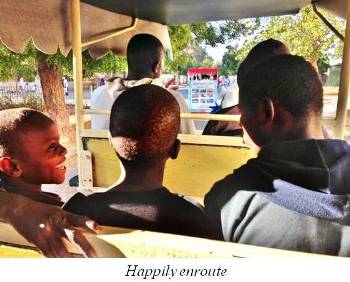 a few had never before ventured even onto the island of Saint Louis,
remaining forever in their familiar begging grounds of Sor on the mainland, a 500 meter
footbridge away.
a few had never before ventured even onto the island of Saint Louis,
remaining forever in their familiar begging grounds of Sor on the mainland, a 500 meter
footbridge away.
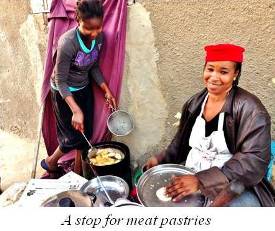
At one historical stop, meat pastries were being fried and offered for sale at a
roadside stand. The children were delighted to be treated to a pastry each for dinner.
As a description was offered of the riverside colonial warehouse that in past centuries
housed the trade goods of ivory, rubber, gold and slaves, one child asked: "What is
a slave?" Sober and astonished silence descended as the guide explained, as gently
as possible, the history of the transatlantic slave trade in Senegal.
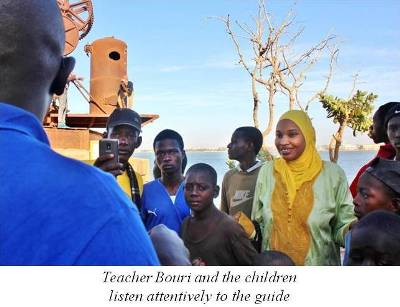 Most of these
kids had never heard of slavery, and could not absorb even the concept of the barbarism
that dominated four centuries of their own history. Watching these children whom the
United Nations defines as modern day slaves trying to accept such historical horrors,
I was struck by how little had, in fact, changed from those difficult times for these
beautiful talibé boys.
Most of these
kids had never heard of slavery, and could not absorb even the concept of the barbarism
that dominated four centuries of their own history. Watching these children whom the
United Nations defines as modern day slaves trying to accept such historical horrors,
I was struck by how little had, in fact, changed from those difficult times for these
beautiful talibé boys.



















